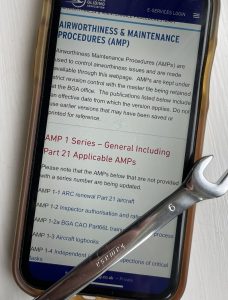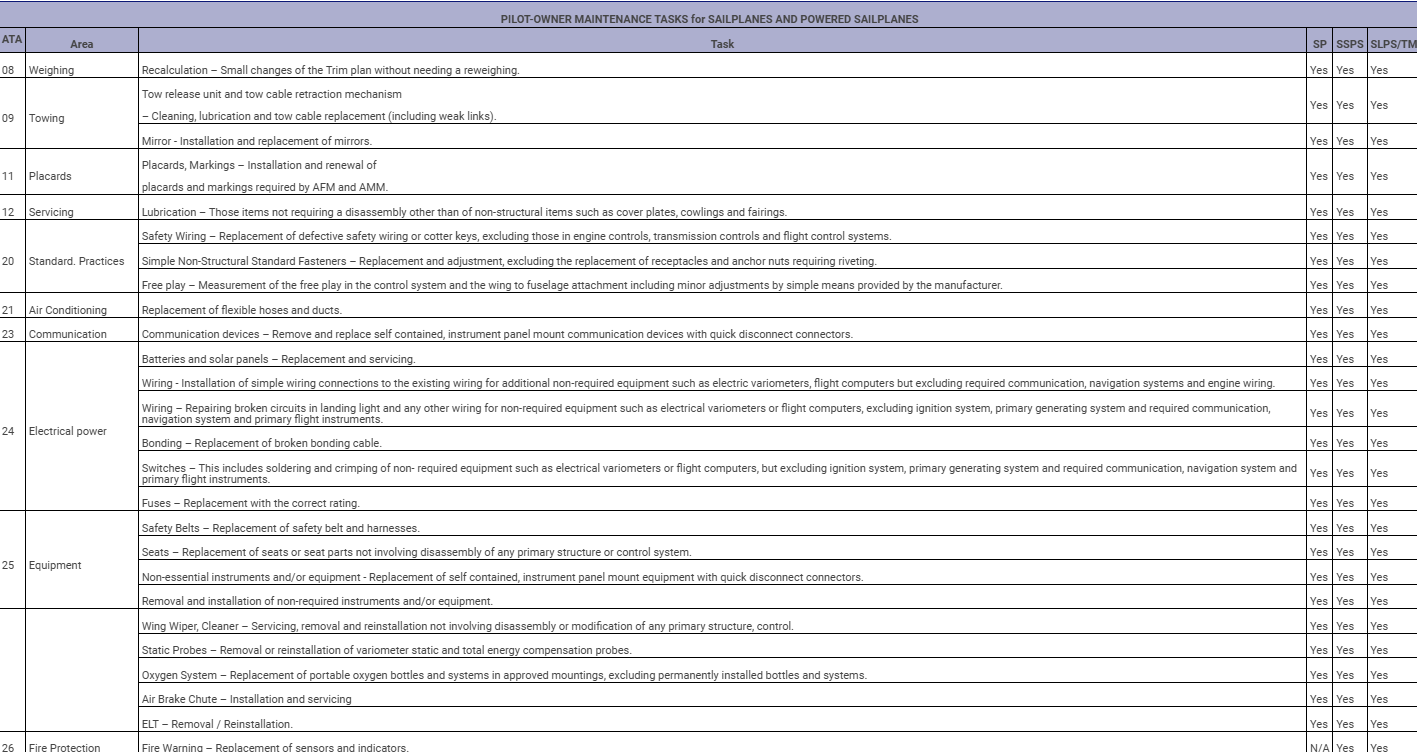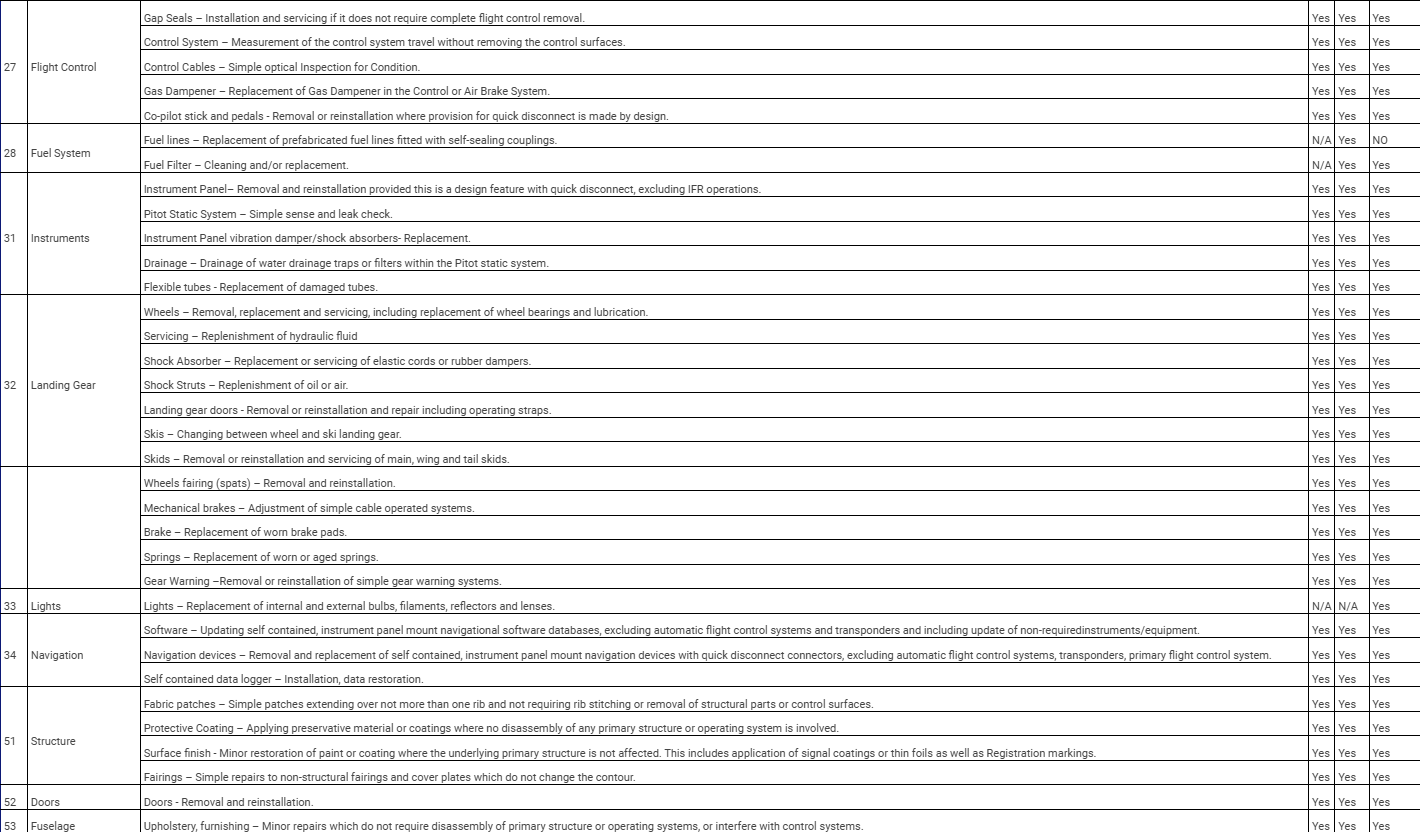Pilot Owner Maintenance
What is pilot-owner maintenance?
Pilot Owner Maintenance is a process detailed within Part ML (the maintenance rules applicable to Part 21 sailplanes) within which pilot owners are entitled to carry out and release (i.e. certify) limited maintenance tasks on their aircraft. The maintenance rules (Part ML), assume that a qualified pilot has sufficient technical knowledge to perform and certify certain maintenance tasks and in doing so, further develops their competency in maintenance. Providing that a pilot-owner understands what they are permitted to do and is aware of their own technical ability, any qualified pilot can carry out limited maintenance.
But what about gliders owned by the club?
If a qualified pilot is a voting member of a gliding club that is listed on the aircraft registration document as owner or operator, provided the club authorises it, the pilot can carry out pilot-owner maintenance on club gliders.
What about the paperwork?
For pilot-owner maintenance, a certificate of release to service is entered in the glider logbook including basic details of the maintenance carried out, the maintenance data used (e.g. the maintenance manual), the date on which the maintenance was completed, as well as the pilot-owner name, signature, and pilot licence (or equivalent) number.
Can a pilot-owner complete the formal annual maintenance?
Not quite. Annual maintenance as part of the required maintenance programme cannot be released by the pilot-owner. A pilot-owner can do most of the work, for example removing seats and panels, cleaning, inspecting, lubricating, measuring and testing. They can even help by checking for any type-specific technical instructions. However, a BGA inspector is responsible for certifying that the annual maintenance has been carried out.
Pilot Owner maintenance seminars
From time to time, BGA facilitated pilot owner maintenance seminars are available. Check availability and book here.
If in doubt, please refer to an appropriately experienced BGA inspector before attempting pilot owner maintenance.
Maintenance guidance
The aircraft maintenance manual is a good source of information. Type Certificate Holders (for example Schempp-Hirth, Schleicher, and DG etc) also provide information – go direct to their websites.
The BGA members website includes a lot of guidance and links to guidance. One example are the Airworthiness Maintenance Procedures (AMP). Aimed at inspectors, but also applicable in many cases to pilot owners, the AMP covers a range of maintenance-related topics. You can view the AMP information here.
The law
The legal requirement is detailed here in Part ML MLA.803.
The limitation detail is described here in Part ML Appendix II.
The tasks that may not be certified by a pilot owner are described here in Part ML Appendix III.
Code: SP = Sailplane SSPS = Self sustaining powered sailplane SLPS / TM = Self launching powered sailplane / TMG
You can click on each section to expand. Use the ‘go back’ arrow to return to the webpage.
Refer also to CS-STAN, which describes several change certification standards that may not require release by an inspector. If in doubt, please refer to an experienced BGA inspector.



